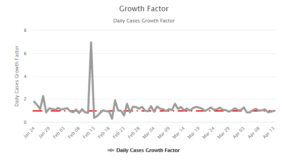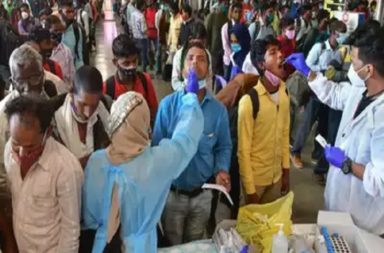India is the second-highest populated nation in the world. In such a populated nation the infection and virus are easily transmissible. The coronavirus pandemic is affecting 210 countries and territories including India. On April 14, India reached the count of 10,541 COVID-19 cases, with 359 deaths and 1,205 recovered. To break the chain of coronavirus in India, the government of India announced a nationwide lockdown. The lockdown and social distancing is the only way to stop this pandemic.
Severe acute respiratory syndrome coronavirus 2 (SARS CoV 2) records a significant downfall in its reproductive number according to the statistical analysis of coronavirus. The reason behind this might be lockdown and social distancing.
The question arises here, that how many people that haven’t been exposed to the disease before, could catch the virus by a single infected individual.
Analysis
The professor of the Institute of Mathematical Sciences, Chennai analyzed the effect of lockdown on coronavirus. In his analysis, he explained that people that haven’t been exposed to the disease before could catch the virus by a single infected individual is R0. Here R0 is called R-naught. If the value of R0 is below one then pandemic will eventually wipe out soon. R0 above one will make the pandemic grow and will spread.

If the value of R0 is below one then pandemic will eventually wipe out soon. R0 above one will make the pandemic grow and will spread.
Sitabhra Sinha, leader of the analysis team said, “The value of R0 in India is relatively low than the previous records. R0 for the novel coronavirus in India was 1.83 from March 5 to April 5 but it lowered to 1.53 from April 6 to April 13. Globally, R0 for SARS CoV 2 has been between 2 and 4. The significant downfall in R0 is specifying the logic behind the lockdown. Without lockdown, the value would have touched between 2 and 4.”
The effect of lockdown in India can be expected to work after two weeks. Because before lockdown, the cases were already present in India. The first two weeks of the lockdown marked a significant rise in COVID-19 patients. Because of the already present cases before the lockdown. The count of COVID-19 cases started increasing in the first two weeks of lockdown because the people were already infected by the virus before lockdown, said Sinha.
Few states like Telangana observed a similar kind of reduction in the growth rate which is consistent from the past few weeks. But there is no reduction in data of Maharashtra, he added.

Sitabhra Sinha
Analysis coinciding with other reports
The analysis by the IMSc points is found common with some other reports. In a report by the Centre for Disease Dynamics and Policy, Johns Hopkins University, and Princeton University in which researchers analyzed the impact of the 21-day lockdown on the spread of COVID-19 in India in March and April. They also analyzed before, during, and after-effects of the lockdown. The 21-days lockdown saved a huge population to be a victim of this COVID-19 infection.
The situation is still skeptical regarding the uplifting of the lockdown.





